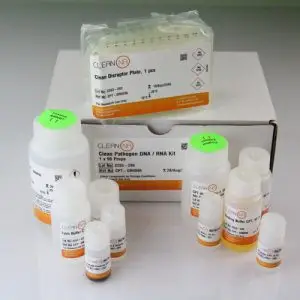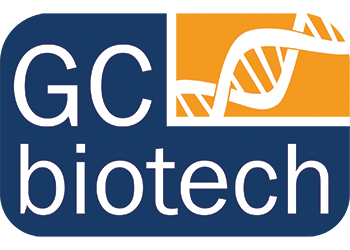Nucleic Acid Isolation
Basics of nucleic acid isolation
 Nucleic Acid Isolation is the process by which DNA and/or RNA is separated from proteins, membranes and other cellular material. Nucleic Acids are the key component for many of today’s molecular testing methods, therefore the quality of the isolation step in your process is very important. Since Nucleic Acid Isolation is the first step in the entire molecular process, it is crucial to assure that the yield and purity meet your expectations. These expectations can vary between fields of research and the downstream applications.
Nucleic Acid Isolation is the process by which DNA and/or RNA is separated from proteins, membranes and other cellular material. Nucleic Acids are the key component for many of today’s molecular testing methods, therefore the quality of the isolation step in your process is very important. Since Nucleic Acid Isolation is the first step in the entire molecular process, it is crucial to assure that the yield and purity meet your expectations. These expectations can vary between fields of research and the downstream applications.
There are four basic steps in a Nucleic Acid Isolation procedure, lyse, bind, wash and elute. First, the disruption of the cellular structure to create a lysate. The cell and nucleus are broken open to release the nucleic acid. Secondly, the nucleic acids are bound to a carrier. After the binding step, it is possible to separate the nucleic acid, because after the first lysate step, the nucleic acid has been freed from the nucleus, but it is still mixed with cell debris and other insoluble material. Thirdly, the purification of the nucleic acid of interest to remove any remaining unwanted material, by washing the mixture with specific buffers. At this point the purified nucleic acid is usually re-dissolved in an elution buffer for use in the downstream application and storage.
Methods of nucleic acid isolation
There are many ways to isolate nucleic acids from your samples. Not all can be translated into an automated solution. When sample numbers are increasing or reproducibility becomes a problem, an automated solution for your nucleic acid isolation becomes more likely. The two methods described below are suitable for automation. When you are not sure which method is the best fit with your situation, please contact us to go through your specifications. Together we will be able to find the best solution for you.
Spin Columns
This method relies on the fact that Nucleic Acids will bind to the solid phase, or silica, under certain conditions. A positively charged silica particle binds with the negatively charged DNA and holds it during centrifugation. The DNA is eluted from the silica particle using TE buffer or distilled water. Although it is a simple and reliable method, there will always remain a small amount of nucleic acid bound to the column. The exact amount can be an uncertainty. If yield is the determination of quality, the spin column method may not be the best choice.
solid phase, or silica, under certain conditions. A positively charged silica particle binds with the negatively charged DNA and holds it during centrifugation. The DNA is eluted from the silica particle using TE buffer or distilled water. Although it is a simple and reliable method, there will always remain a small amount of nucleic acid bound to the column. The exact amount can be an uncertainty. If yield is the determination of quality, the spin column method may not be the best choice.
The centrifugation step necessary to collect eluates can be a disadvantage using this method for an automated protocol. Especially when working with larger volumes, this can be become a bottleneck. There are not many centrifuges commercially available that are able to hold the tubes with volumes this high. The solution for this barrier is to divide your samples into multiple aliquots and pool them after the nucleic acid isolation is completed.
Magnetic beads

The beads and nucleic acids are then separated from the rest of the solution using a magnetic device. This allows for the removal of the supernatant containing the contaminants through one or a series of wash steps. When the elution buffer is added, the nucleic acids will be released from the beads into the buffer.
The magnetic bead-based method is the preferred method for automation of Nucleic Acid Isolation, due to the absence of centrifugation steps and the ease of use with a liquid handler. Opposed to the spin columns the yield within a magnetic bead-based isolation is close to 100%.
Considerations with nucleic acid isolation
Before you can start with automating your process, it is important to consider a few things. First of all, your throughput. How many samples do you need to isolate per run and what do you expect in the near future?
Secondly you may want to take into account the acceptance criteria of the nucleic acid isolation with regards to the downstream application. When sample material is scarce, for example when working with patient material, it can be critical to have as much yield as possible or a high purity of the nucleic acids. But most of all, the isolation should have a very high reliability and reproducibility. When sample material is plentiful, for example in the agro-genomics, yield becomes of less importance, but throughput and miniaturization become of a higher importance.

